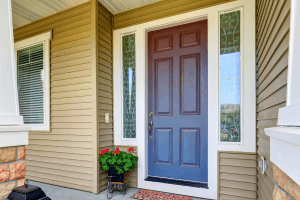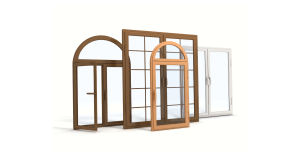Replacing windows is a big task for homeowners, and while there may be a variety of reasons one would want to replace windows – style, energy conservation, easier to clean – it’s important to know there’s an equal variety of replacement windows on the market. It’s not a given that all of them will ensure energy savings, and some will even take years to recoup the cost of investment.
So don’t let your prejudices mislead you and cost you money, and follow these following steps to arm yourself.
Rule 1: Balance Style with Function
Windows serve a functional purpose, but they are also integral to the curbside value of your home and the overall aesthetic. Choosing a window style can be a personal preference but is also a design consideration based on what exists on an older home and how you’d like the windows to look from the inside.
To start thinking about a window style, you must appraise the style of your house. Everything from the age to architectural design will be relevant, so if you don’t know these facts that would be some quick research to begin right now.
For example, colonial-style homes typically have double-hung windows, which are also the most common for most other homes. These are the basic windows that slide up and down, and are ideal for air flow. It also tilts in for easy cleaning.
On the other hand, bay windows are popular for main floor living rooms and breakfast nooks but might not fit with the house’s construction. There are also more unique windows – octagons, stained glass, etc. – and while these might reflect your personal flare, they might not be popular with others if you are treating this like a form of investment.
Rule 2: Choose the Correct Frame Material
Arguably the most important element of windows is the materials which impacts its lifespan. Consider how much abuse the average window takes simply over the course of a year, especially if you are in an area with erratic or punishing weather.
New windows are available in wood, aluminum, vinyl, and fiberglass but there’s really only 3 types that homeowners will likely need. Let’s start with vinyl, which is very popular and the easiest to maintain over time. Unlike other materials, it will not peel or rot away and doesn’t require any aesthetic or functional repairs such as treatment or sanding.
Secondly is wood, which on the other hand might be the best choice to fit the current look of the house yet will likely need to be replaced over time if they become drafty, or will require more frequent maintenance. This is a common issue with older houses.
The last type is a combination of the two, known as “vinyl clad windows.” These offer the appearance of wood with a thin vinyl coating on the outside. With these, you can cut down on maintenance while retaining the wood look that many homeowners desire.
Rule 3: Select the Type of Glass
Glass is what you want to pay attention to if you’re interested in reducing your energy costs, but it obviously has an equal amount to do with durability over time. While cost isn’t the only concern, you can bet that low-cost windows are not the ones that will save you money over time. The following is a list of all the major glass types you should be familiar with:
Dual/Triple Pane Glass: The most commonly seen types of replacement windows are dual pane and triple pane glass.. Dual pane is the standard choice which includes two panes of glass with an airspace in the middle. Triple pane glass simply adds another layer and additional airspace, and they also provide a good level of sound insulation and are a must in urban areas or homes facing busy streets. With 2 and 3 layers of insulation, you will experience less condensation issues as the interior window glass will be closer to room temperature which avoids fogging.
Argon Gas Glass: In these cases, the spaces between the glass are filled with argon to slow the transfer of heat through the window. While being colourless, odourless, and non-toxic, sases like argon are preferable to air because air contains moisture that can condense on the inside of the glass units, making the window cloudy.
Krypton Gas Glass: Similar to Argon gas, Krypton is colourless and odourless but is denser than the former. There is an ongoing debate on which gas is superior, so while Kyrpton is denser that means the windows can be thinner. You will see these mainly in triple or quad-pane windows rather than double-pane.
Low- E Glass: This refers to glass with a special microscopically thin, virtually invisible layer of material on the surface of the glass which acts to reduce the amount of heat that can flow through the glass itself. It’s applied on the outside or inside pane of glass depending on the manufacturer. Ultimately, this keeps heat in the house during the winter and reflects heat back out during the summer.
Rule 4: Consider A Custom Service for Difficult Jobs
There are two avenues to go down for window replacement: buying a window from a retailer, or employing a window replacement specialize to make you a custom window. The benefit of this path is that these companies have access to all the typical manufacturers and can work within the parameters we have outlined above.
Most importantly, these specialists can ensure everything is measured precisely to fit which is crucial for energy savings (if that’s what you are after.) You would consider a service like this if you have an irregularly shaped window or you live in a particularly old or difficult house. Your goal as a homeowner is to replace windows as infrequently as possible, so this option leaves the least room for error.
When dealing with third party companies or retailers, make sure you do your research, even if it’s just internet reviews. Due to the precise and complicated nature of the job, treat these companies like you would a mechanic. There can be a lot of low-cost alternatives out there that might end up costing you even more money for a botched job, so find what the right balance is for your area.

